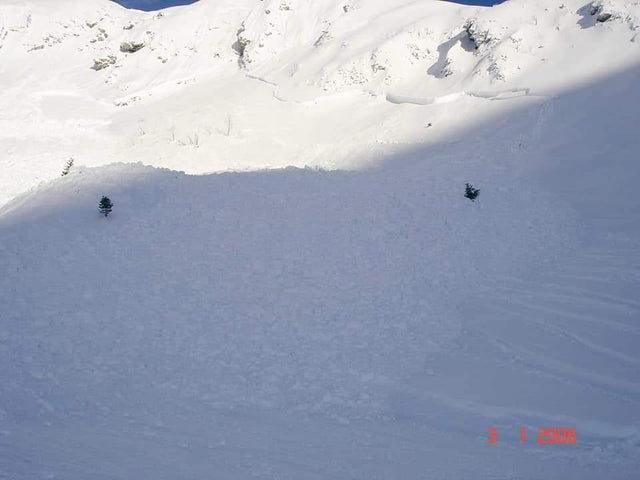05 Powsurfing Safety tips: Ride Smart, Ride safe
Powsurfing, like other sideways sports such as skateboarding, snowboarding, and surfing, falls under the category of extreme sports. However, this label does not necessarily mean that it is more dangerous than other sports that are not labeled as extreme. In fact, powsurfing typically takes place on soft snow, which often results in a much gentler impact compared to falling on hardpack snow with a snowboard, concrete with a skateboard, or water with a surfboard.
Many older snowboarders, whose past injuries prevent them from riding parks or hardpacked slopes, have transitioned to powsurfing because of its lower impact on joints. Powder snow is significantly easier on knee injuries and other skeletal damage compared to riding on hard surfaces.
That said, all sports come with inherent risks. The key is understanding these risks and taking steps to minimize them. Here are some essential safety considerations for powsurfing.
1. The importance of a safety leash
The biggest safety risk in powsurfing is the board itself, as it is not attached to your feet with bindings. A proper safety leash is a must. I learned this lesson firsthand when I first started powsurfing using an old Elan snowboard with a cut-off tail. I used a leash, but it was inadequate. On my first fall, my board shot down the mountain, flew over a road, and fortunately, no one was there.
A loose powsurfing board can become a high-speed projectile, capable of causing serious injury or even death if it hits someone. Over time, I experimented with different leashes—starring with shoelaces to classic snowboard leashes—before settling on long coiled leashes as the best option. These attach to the powsurf on one end and preferably to your waist belt or backpack rather than your leg, preventing you from stepping on the leash while riding. A longer, retractable leash also reduces the risk of the board hitting you when you fall.
Even with a long coiled leash, if your board is flying around your head during a fall, always protect your head with your hands. Also, be aware that no leash is 100% fail-proof. A poorly designed or worn-out leash can break, so it's crucial to use well-tested leashes and follow manufacturer guidelines. Avoid wrapping coiled leashes around your board, exposing them to sharp objects, or leaving them under direct sunlight for extended periods. A proper safety leash not only protects your board but also ensures the safety of others on the mountain.
Coiled leash attached to the powsurf on one side and backpack strap on the other:

2. Avalanche awareness
The next danger in powsurfing are avalanches. Avalanches claim lives every year, including the tragic death of Greg Todds, the pioneer of noboarding. The good news is that powsurfing does not require extreme terrain to be thrilling. Small backyard hills or gentle slopes are often enough to enjoy the ride.
In 2006, I had a near-death experience snowboarding, when I triggered a massive avalanche in a steep couloir beside a ski slope at Vogel, Slovenia’s top freeride resort. The avalanche buried me alive, covering an entire ski piste below. I thought I wasn’t going home that day. Miraculously, when the snow dust settled, the tail of my snowboard was sticking out just 3 cm above the surface. Slovenian snowboarding legend and one of the best possible snowboarding ambassadors, Marko Grilc - Grilo, dug me out with his bare hands. That was the most terrifying five minutes of my life—first, the helplessness of thinking I was going to die, and then the overwhelming relief when I realized someone was saving me. Years later, Grilo started powsurfing, and I had some of my best powsurfing runs with him. Unfortunately, Marko wasn’t as lucky years later while riding shallow powder with his snowboard above rocky terrain when he fell on his chest onto a rock, bleeding out , and tragically passed away in 2021.
In 2006 I dropped from the top of the couloir in the picture and ended up buried somewhere near where the black line stops. The entire mountain ripped away, leaving no room to escape—left or right
Since my avalanche experience, I have prioritized safer terrain for powsurfing. When fresh snowfall increases avalanche risks in high mountains, I opt for abandoned ski resorts where I can ride safely without avalanche equipment. However, if you plan to powsurf in avalanche-prone areas, it is strongly recommended to take an avalanche safety course and always carry the necessary gear—beacon, probe, shovel, and an ABS backpack. Additionally, in avalanche-prone areas, use a quick-release safety leash and never ride alone.
3. Avoiding hard surface and tree collisions
Another major risk in powsurfing is hitting solid objects during a fall, such as ice under the pow, rocks, or trees. Even soft powder snow can be deceptive—if there is no base layer, you can quickly sink through and hit hidden rocks underneath. Early in the season, when the base is thin, avoid rocky terrain and aim for grassy areas, which are typically safer. This is another reason I prefer abandoned ski resorts—they are generally free of large rocks.
One of the key factors in avoiding falls on rocks or other hard objects hidden beneath the powder is understanding terrain and snow conditions. Steep areas with shallow snow can be particularly risky, as they may lead to a fall. Mountain conditions often vary from one spot to another. While some areas might offer perfect conditions for powsurfing, other parts may be windblown or have packed snow. In these cases, it's best to walk over those sections while carrying your powsurf board. Hybrid boards ( powsurf / snowboard) are also a great solution for adapting to changing conditions, allowing you to easily switch between powsurfing and snowboarding during your run.
Tree runs are also a popular aspect of powsurfing, offering a unique riding experience. However, there is always a risk of hitting a tree with your head. Although such accidents are rare, tree wells (especially in regions where they are common) pose another hazard.
To minimize the risk of falls, build your powsurfing skills on safer terrain before progressing to more challenging environments. Also, consider wearing a helmet. There are still many riders who think helmets aren’t cool, and I believe there’s an opportunity for designers to make them look cooler. Think about it—fighter jet pilots or hockey players wear helmets, and they look great.
Final thoughts
Powsurfing, like life, is not 100% safe—but the joy it brings is absolutely worth it. Psychologist Jordan Peterson has said something about skateboarders what could we translate to powsurfers too. In his opinion skateboarders demonstrate courage, creativity, and the drive to push boundaries. He criticizes excessive safety regulations that try to eliminate all risks, arguing that young people need challenges to develop competence and confidence.
Extreme sports teach us to face fear, develop skill, and build character. Rather than eliminating risk, we should learn to manage it wisely, embracing challenges while taking the necessary precautions. Powsurf smart, stay safe, and enjoy the ride!



0 Comments
There are no comments for this article. Be the first one to leave a message!